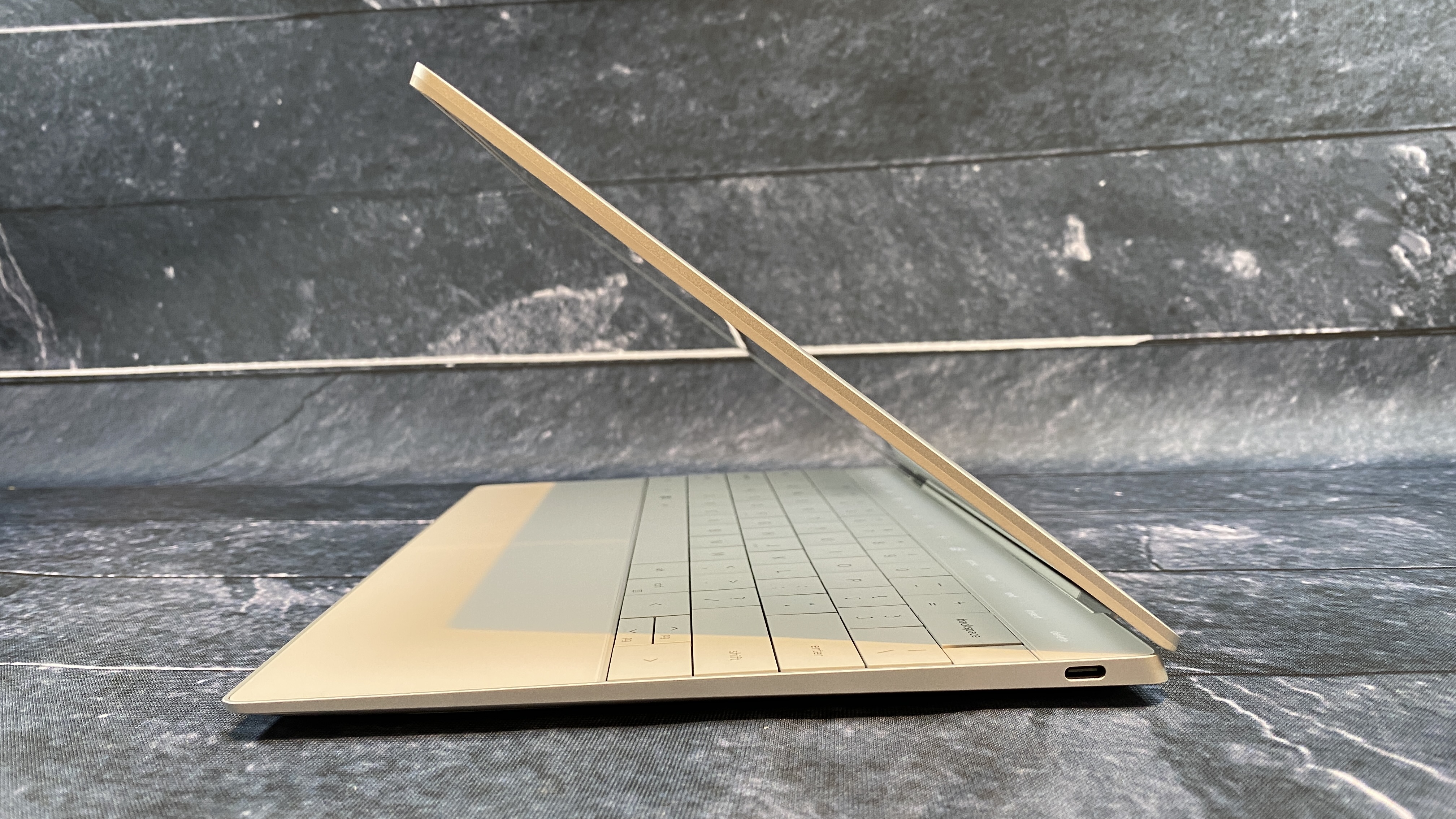Dell’s XPS 13 Plus Packs 12th Gen Intel, Questionable Touch Bar
The headphone jack is gone, too!
For years, the Dell XPS 13 has been considered one of the best ultrabooks, packing pretty much everything you could ask for into a slim, well-designed chassis made of premium materials. At CES 2022, the company announced a full-scale redesign/upgrade, the XPS 13 Plus, meant to house Intel's 12th Gen Core processors rated at 28W. But when you redesign something beloved, you're sure to draw some criticism, especially when you start removing ports and physical keys.
On the XPS 13 Plus, Dell has scrapped a physical function row in favor of what it refers to as a "capacitive touch function row." By default, it shows virtual controls such as media keys, display brightness, volume adjustment and home and end keys. Hold down the (physical) function button and the keyboard switches to your typical function numbers.
It's a questionable decision, at best. Apple is finally eliminating its Touch Bar, which was an OLED display, after half a decade on the market beecause creatives wanted real function keys. The 14-inch and 16-inch MacBook Pros have bigger function keys than ever before. One would think after seeing Apple get dinged on that for five years, Dell wouldn't just now get into removing function keys, but here we are. Maybe Dell's implementation will be better, but I have doubts. We'll have to spend more time with it to say for sure.
There are a myriad of other changes in the XPS 13 Plus. There are fewer ports now; Dell has cut the microSD card slot and the 3.5 millimeter headphone jack in the current Dell XPS 13 (9310). Both are odd decisions in a more powerful XPS designed to blur the line between productivity users and creatives.




The keyboard now goes edge to edge, without any spaces between the keys. The keycaps themselves are larger, with a 0.3 mm curve, while the keys offer 1 mm of travel. The haptic touchpad is hidden in an all-glass wrist rest. It looks stunning, but there are no markers as to where the touchpad actually starts and ends. In a brief hands-on, directly under the spacebar was a safe bet.
| CPU | Up to Intel Core i7-1280P (14 cores) |
| Graphics | Intel Iris Xe |
| Display | 13.4 inches, up to 4K UHD+, OLED optional, touch optional |
| RAM | Up to 32GB LPDDR5-5200 |
| Storage | 256GB PCIe 3 SSD, Up to 2TB PCIe 4 SSD |
| Battery | 55 WHr, built-in |
| Ports | 2x Thunderbolt 4 over USB Type-C |
| Dimensions | 11.63 x 7.84 x 0.6 inches / 295.3 x 199.04 x 15.28 mm |
| Weight | Starting at 2.73 pounds / 1.24 kg |
| Starting Price | $1,199 |
Some of these changes, including the lack of function keys, were to allow for greater thermal headroom, Dell told Tom's Hardware. The XPS 13 Plus uses Intel's 12th Gen "Alder Lake" P-series processors running at 28W, up from approximately 15W in previous XPS 13 laptops. Dell claims it has larger fans placed at the outer edges of the laptop, which it says allows up to 55% more airflow without extra noise.
Dell is also promising better sound from quad speakers. The sound here better be good since, you know, there's no headphone jack.
Of course, there are some aesthetic carryovers. The InfinityEdge display still has thin bezels on all sides, including a 720p webcam and IR cameras for Windows Hello up top.
The processor options will range from a 12-core Core i5-1240P (up to 4.4 GHz) to a Core i7-1280P (4.8 GHz, 14-cores). Like their desktop counterparts, 12th Gen Intel processors combine efficiency and performance cores.
Additionally, Dell has jumped to LPDDR5 RAM, ranging from 8GB to 32GB, which is soldered to the motherboard. The base SSD is a 256GB PCIe 3.0 drive, but 512GB up to 2TB nets you faster PCIe 4.0 speeds.
The 13.4-inch, 16:10 display options include a 4K+ UHD+ (3840 x 2400) touchscreen, a 3456 x 2160 OLED touchscreen, or FHD+ (1920 x 1200) in either or non-touch varieties.
The XPS 13 Plus is no thicker than the existing XPS 13 at 0.6 inches. It will start at 2.73 pounds, and is made of machined aluminum in either platinum (white/silver) or graphite (dark gray/black).
While the XPS 13 Plus is a new name and design, Dell hasn't made any announcements regarding the regular XPS 13, which is often considered the MacBook Air of Windows machines: one that's easy to recommend to anyone, as long as they're willing to spend the money on it.
The XPS 13 Plus will start at $1,199 and will release sometime this spring. It will be both available with Windows 11 or as a Developer Edition with Ubuntu 20.04.
Get Tom's Hardware's best news and in-depth reviews, straight to your inbox.

Andrew E. Freedman is a senior editor at Tom's Hardware focusing on laptops, desktops and gaming. He also keeps up with the latest news. A lover of all things gaming and tech, his previous work has shown up in Tom's Guide, Laptop Mag, Kotaku, PCMag and Complex, among others. Follow him on Threads @FreedmanAE and BlueSky @andrewfreedman.net. You can send him tips on Signal: andrewfreedman.01
